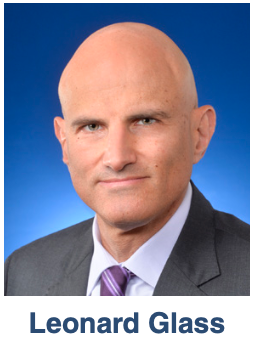Next-level Efficacy: Mounjaro
Dual-targeted injection poised to rock GLP-1 field in diabetes—and eventually weight loss.

Eli Lilly’s Mounjaro (tirzepatide) is a new way to help adults living with type 2 diabetes keep their levels of glucose under control. It also has the potential to help with obesity, which is a widespread public health issue.
The once-weekly glucose-dependent insulinotropic polypeptide (GIP) and glucagon-like peptide-1 (GLP-1) receptor agonist is taken by injection under the skin at the appropriate dosage, which may be adjusted to meet the blood sugar needs of the individual taking it. It is a single molecule that activates the body’s receptors for GIP and GLP-1, which are natural incretin hormones. Mounjaro comes with an auto-injector pen and a pre-attached hidden needle, making administration user-friendly. It is available in six doses—2.5 mg, 5 mg, 7.5 mg, 10 mg, 12.5 mg, and 15 mg.
The GIP and GLP-1 double-action combo holds the promise of being a blockbuster drug given the potential product efficacy and the size of the market for obesity. “It provides a level of efficacy that we have never seen before, with a novel mechanism that addresses more of the core problems of type 2 diabetes,” says Leonard Glass, MD, FACE, vice president of global medical affairs at Lilly Diabetes.

Mounjaro is the first and only FDA-approved dual GIP and GLP-1 receptor agonist for diabetes and became available at US pharmacies on June 7. According to Glass, Lilly is using its deep understanding of type 2 diabetes to meet the continually evolving needs of patients through the research and development of novel treatment solutions and technologies. Half of more than 30 million Americans living with the condition are not reaching their target blood glucose levels, and Mounjaro embodies Lilly’s mission to bring innovative new therapies to and advance care in the diabetes community. “Mounjaro’s approval is significant because current outcomes for people with type 2 diabetes worldwide are unacceptable,” says Glass.
This first-in-class drug is relatively well-tolerated and has a better side-effect profile vs. other GLP-1s. According to analysts, it should rival GLP-1 receptor agonist Wegovy (semaglutide), made by Novo Nordisk, as it reportedly has stronger potential for reducing obesity than Wegovy, as evidenced in Mounjaro’s Phase III trial results in weight loss. In trials comparing Mounjaro to other medications for diabetes, patients who received 15 mg of the drug had lower HbA1c by .5% more than semaglutide, .9% more than insulin degludec, and 1% more than insulin glargine. “Mounjaro delivered superior A1 reductions against all comparators—including placebo and several widely used diabetes therapies such as injectable semaglutide 1 mg,” says Glass.
Recently, Wegovy has faced reimbursement issues with the payers. This is nothing new when it comes to obesity drugs; in the past they have been considered vanity treatments. But Mounjaro has the potential impact to reduce factors contributing to cardiovascular risk such as diabetes, cholesterol, and hypertension as a result of the weight loss. “Additional weight loss usually results in further improvements in diabetes control,” notes Glass.
Currently, Mounjaro is only indicated as an adjunct to diet and exercise to improve glycemic control in adults with type 2 diabetes, but Lilly is studying it as a potential treatment for other conditions associated with type 2 diabetes, including a Phase III cardiovascular outcomes trial assessing Mounjaro against Trulicity (dulaglutide). The company also has an ongoing trial—expected to complete later in 2022—on the efficacy and safety of Mounjaro compared to insulin lispro in people with type 2 diabetes who have inadequate glycemic control on insulin glargine. Another planned trial is evaluating the efficacy and safety of Mounjaro compared to placebo in 10-year-olds to 18-year-olds with type 2 diabetes taking metformin, basal insulin, or both.
According to Glass, the future of Mounjaro includes looking into the treatment of obesity or overweight, and heart failure with preserved ejection fraction (HFpEF) in people with obesity. It is also being studied as a potential treatment for non-alcoholic steatohepatitis (NASH). Studies of Mounjaro in obstructive sleep apnea (OSA) and its effects on morbidity/mortality in obesity are planned as well.
Evaluate Vantage (EV) projects an estimated $5.4 billion in sales for Mounjaro by 2026. An EV analyst mentioned to Pharm Exec in May that some see peak sales close to $20 billion annually by the early 2030s, and that could be conservative due to its “amazing weight loss and glycemic control.” There are high expectations for Lilly to make Mounjaro into a new major drug franchise, especially if the company receives approval to market it for obesity as well.
Read the profiles of all 2022 product launch selections here.
Isabella Ciccone served as Pharm Exec’s 2022 summer editorial intern and is now an Assistant Editor for Nuerology Live.

FDA Grants Priority Review to Regeneron’s Eylea for Macular Edema Following Retinal Vein Occlusion
April 18th 2025Regulatory action was based on data from the Phase III QUASAR trial, which demonstrated that Eylea HD dosed every eight weeks achieved non-inferior visual acuity outcomes compared to Eylea in patients with macular edema following retinal vein occlusion.
Addressing Disparities in Psoriasis Trials: Takeda's Strategies for Inclusivity in Clinical Research
April 14th 2025LaShell Robinson, Head of Global Feasibility and Trial Equity at Takeda, speaks about the company's strategies to engage patients in underrepresented populations in its phase III psoriasis trials.
The Misinformation Maze: Navigating Public Health in the Digital Age
March 11th 2025Jennifer Butler, chief commercial officer of Pleio, discusses misinformation's threat to public health, where patients are turning for trustworthy health information, the industry's pivot to peer-to-patient strategies to educate patients, and more.